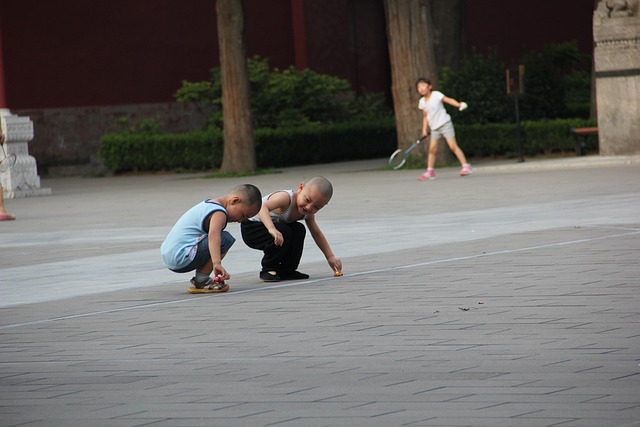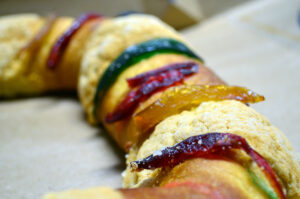Chinese Question Particles: 吗 ma, 呢 ne, and 吧 ba
In this post we’ll cover three Chinese question particles. First, we’ll look at the yes/no question particle 吗 ma. Then we’ll turn to the “turnaround” particle 呢 ne. Finally, we’ll see the confirmation particle 吧 ba. For each particle, we’ll give a simple explanation of the meaning it carries, along with several examples.
吗 ma: Yes/No Question Particle
To form a yes/no question in Chinese, just put the question particle 吗 ma at the end of a statement.
Structure: [Statement] + 吗 ma?
For example, we can start with these two statements.
- 你会中文。
Nǐ huì zhōngwén.
You speak Chinese. - 这是你住的酒店。
Zhè shì nǐ zhù de jiǔ diàn.
This is your hotel.
To turn them into yes/no questions, just add 吗 ma:
- 你会中文吗?
Nǐ huì zhōngwén ma?
Do you speak Chinese? - 这是你住的酒店吗?
Zhè shì nǐ zhù de jiǔ diàn ma?
Is this your hotel?
Just remember that 吗 ma is only used with questions that can be answered with a yes or no. It’s never used in open ended questions or questions with question words like 什么 shénme (what) or 谁 shéi (who). And in Chinese, you don’t have to change the word order to form a question, just add 吗 ma.
- 你是老师吗?
Nǐ shì lǎoshī ma?
Are you a teacher? - 附近有公共厕所吗?
Fù jìn yǒu gōng gòng cè suǒ ma?Is there a public toilet nearby? - 这儿远吗?
Lí zhèr yuǎn ma?Is it far from here? - 你有英文菜单吗?
Nǐ yǒu Yīngwén càidān ma?Do you have a menu in English?
呢 ne: Turnaround Particle
The particle 呢 ne has several uses in Chinese, but the most basic one translates as something like how about…? or what about…?
Structure: [Topic] + 呢 ne?
- 我很好,你呢?
Wǒ hěn hǎo, nǐ ne?
I’m fine, and you? - 我想要点茶。你呢?
Wǒ xiǎng yàodiǎn chá. Nǐ ne?
I’d like some tea. How about you? - 你妈妈是中国人。你爸爸呢?
Nǐ māmā shì zhōngguó rén. Nǐ bàba ne?
Your mom’s Chinese. What about your dad?
The particle 呢 ne can also be used with questions to add a softer or more inquisitive tone. Compare:
Structure: [Question] + 呢 ne?
- 他在哪儿?
Tā zài nǎr?
Where is he? - 他在哪儿呢?
Tā zài nǎr ne?
Now, where is he? Where could he be?
呢 ne is also used to soften questions that might sound too rude or abrupt otherwise. For example, these questions can be a bit too direct:
- 你那样感觉的原因是什么?
Nǐ nàyàng gǎnjué de yuányīn shì shénme?
Why do you feel that way? (could sound challenging) - 你来不来?
Nǐ lái bu lái?
Are you coming or not?! (could sound too direct)
But if you add 呢 ne, the tone becomes more inviting.
- 你那样感觉的原因是什么呢?
Nǐ nàyàng gǎnjué de yuányīn shì shénme ne?
Why do you feel that way? (an inviting tone, not a challenging tone) - 你来不来呢?
Nǐ lái bu lái ne?
Are you coming? (a genuine question, an inquisitive tone)
吧 ba: Confirmation Particle
The particle 吧 ba adds an inviting tone to a question. It’s very similar in this use to adding words like right? or don’t you think? to questions in English when you’re not 100% certain of the answer.
Structure: [Statement] + 吧 ba?
- …对吧?
…duì ba?
…Right? - …好吧 ?
…hǎoba?
…OK? - 你是老师吧?
Nǐ shì lǎoshī ba?
You’re a teacher, right? - 他应该在家吧?
Tā yīnggāi zài jiā ba?
He’s probably at home, don’t you think?
吧 ba is also used to give gentle commands or to make polite requests or invitations.
Structure: [Command/Suggestion] + 吧 ba
- 别说话了吧。
Bié shuōhuà le ba.
Stop talking, okay? - 给我一点时间吧。
Gěi wǒ yìdiǎn shíjiān ba.
Could you give me a bit of time, please? - 我们在家看电影吧。
Wǒmen zàijiā kàn diànyǐng ba.
How about we watch the movie at home? - 开空调吧!
Kāi kòngtiáo ba!
Go ahead and put the air-conditioner on! - 我们去骑自行车吧。
Wǒmen qù qí zìxíngchē ba.
Let’s go for a bike ride.
Get on the road to speaking Chinese with the Language Garage!
We hope you’ve enjoyed learning about Chinese Question Particles 吗 ma, 呢 ne, and 吧 ba. If you’d like to learn more:
- Follow us on Facebook, LinkedIn, BlueSky, Mastodon, Twitter, Threads, Instagram, or Pinterest. We publish lots of Chinese vocabulary, grammar, and culture notes, so it’s a great way to pick up some new vocabulary and practice.
- Check out our other posts on Chinese language, culture, and more.
- Enroll in affordable, flexible, and personalized private online Chinese lessons or sign up for a small group online Chinese class.
- Create a free Language Garage account to access tons of Chinese vocabulary, grammar, and culture.
Image by Sylvie DELOGE from Pixabay





